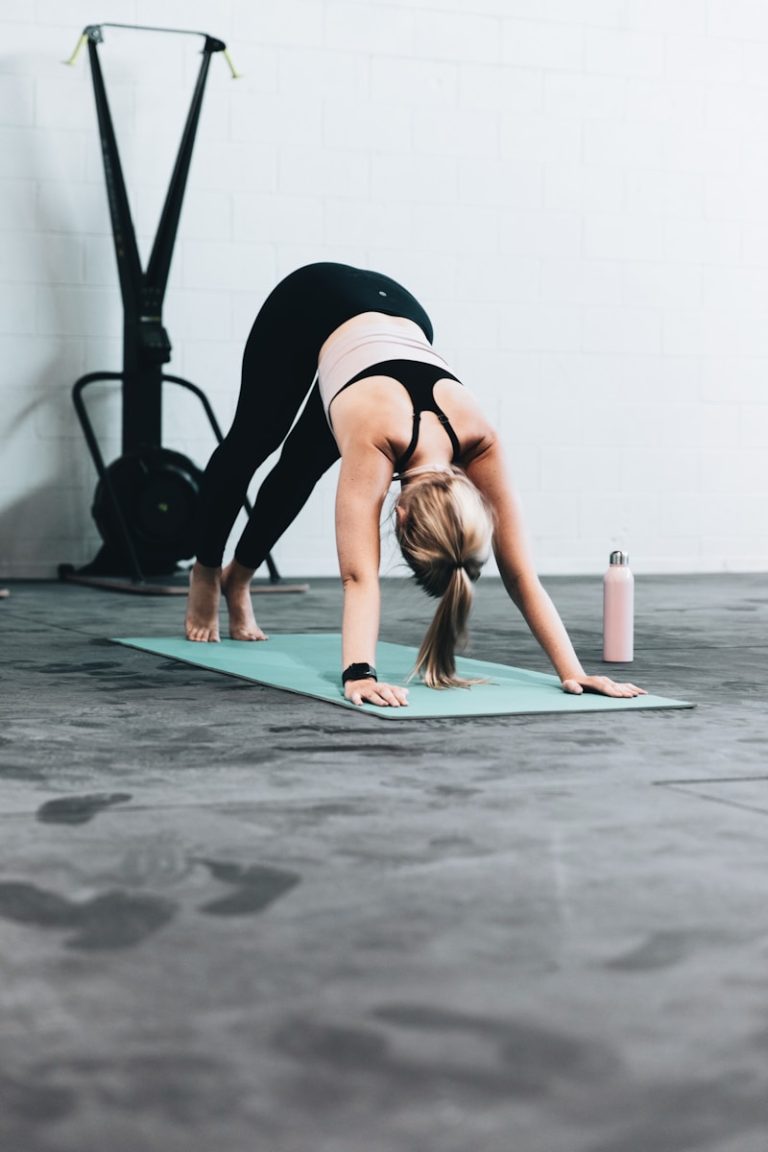Standing Tall: The Importance of Posture and How Physiotherapy Can Help
Posture plays a crucial role in maintaining overall health and well-being. Good posture is essential for proper alignment of the body, which helps prevent strain on muscles, joints, and ligaments. Poor posture, on the other hand, can lead to a variety of health issues, including back and neck pain, headaches, and even digestive problems.
The Importance of Good Posture
Maintaining good posture can also have a positive impact on mental health. Research has shown that proper alignment of the body can improve mood, increase energy levels, and reduce stress and anxiety. Additionally, good posture can enhance self-confidence and body image, leading to a more positive self-perception.
One of the key benefits of good posture is improved breathing and circulation. When the body is properly aligned, the lungs have more room to expand, allowing for better oxygen intake. This can increase energy levels, improve concentration, and boost overall cognitive function.
POSTURE IN MODERN SOCIETY

In modern society, poor posture has become increasingly prevalent due to a variety of factors. The rise of sedentary lifestyles, characterised by long hours spent sitting at desks or in front of screens, has contributed to a significant increase in poor posture habits. This prolonged sitting can lead to muscle imbalances, weakened core muscles, and tight hip flexors, all of which can contribute to poor posture.
Additionally, the widespread use of smartphones and other handheld devices has led to a phenomenon known as “text neck,” where individuals hunch over their devices for extended periods of time, putting strain on the neck and upper back muscles. This constant forward head posture can lead to chronic neck and shoulder pain, as well as headaches and reduced range of motion.
Furthermore, poor posture can be exacerbated by stress and mental health issues, as individuals may unconsciously adopt slouched or hunched positions as a response to feelings of anxiety or tension. Overall, the prevalence of poor posture in modern society highlights the importance of awareness and proactive measures to address and correct these habits for improved health and well-being.
Consequences of Poor Posture: a Musculoskeletal Issue
Posture refers to the position in which a person holds their body while standing, sitting, or lying down. It plays a crucial role in supporting the body’s structure and function by ensuring that the bones, muscles, and joints are aligned properly. Good posture helps distribute the body’s weight evenly, reducing strain on muscles and ligaments, and allowing for efficient movement and balance.
MUSCLE IMBALANCES:
Poor posture can have a multitude of consequences on the musculoskeletal system, leading to muscle imbalances, joint stiffness, and strain. When the body is not properly aligned, certain muscles may become overworked while others are underutilised, resulting in muscle imbalances.
For example, slouching forward while sitting can cause the muscles in the chest and front of the shoulders to become tight and shortened, while the muscles in the upper back and neck become weak and overstretched. This imbalance can lead to discomfort, pain, and reduced range of motion in the affected areas.

JOINT STIFFNESS & STRAIN:
In addition to muscle imbalances, poor posture can also contribute to joint stiffness and strain. When the body is held in a position that deviates from its natural alignment, it can put excessive stress on the joints, leading to inflammation, pain, and reduced flexibility. For example, sitting with rounded shoulders and a forward head posture can place strain on the cervical spine and shoulder joints, causing stiffness and discomfort over time.

NECK PAIN:
Common musculoskeletal problems associated with poor posture include neck pain, back pain, and shoulder tension. Neck pain is a common complaint among individuals who spend long hours sitting at a desk or looking down at electronic devices. Poor posture, such as forward head posture or rounded shoulders, can place strain on the muscles and joints of the neck, leading to tension, stiffness, and pain. Over time, this can contribute to conditions such as cervical spondylosis or cervical radiculopathy, where the nerves in the neck become compressed or irritated, causing pain, numbness, or weakness in the arms or hands.
BACK PAIN:
Back pain is another prevalent issue that can result from poor posture. When the spine is not properly aligned due to slouching or hunching, it can lead to increased pressure on the intervertebral discs, muscles, and ligaments of the back. This can result in conditions such as lumbar disc herniation, muscle strains, or facet joint dysfunction, causing localised or radiating pain in the lower back and legs.
SHOULDER PAIN:
Shoulder tension is also a common consequence of poor posture, particularly when the shoulders are rounded forward or elevated due to prolonged sitting or improper ergonomics. This can lead to tightness and discomfort in the muscles of the shoulders, upper back, and neck, contributing to conditions such as rotator cuff impingement, thoracic outlet syndrome, or myofascial pain syndrome.
Overall, poor posture can have significant implications for musculoskeletal health, leading to muscle imbalances, joint stiffness, and strain. It is important to be mindful of posture throughout the day and incorporate corrective exercises and stretches into your routine to help alleviate discomfort, prevent further issues, and support overall musculoskeletal well-being.
The Role of Physiotherapy in Correcting Posture Issues
Physiotherapy plays a crucial role in correcting posture issues by addressing musculoskeletal imbalances, reducing pain, and improving overall function. A comprehensive approach to posture correction typically involves a combination of postural assessment, manual therapy techniques, postural correction exercises, and ergonomic advice.
POSTURAL ASSESSMENT:
Postural assessment is a key component of physiotherapy intervention for posture issues. During a postural assessment, a physiotherapist will evaluate the alignment of the body’s structures, including the spine, pelvis, shoulders, and limbs. This assessment helps identify areas of muscle weakness, tightness, or imbalance that may be contributing to poor posture. By understanding the underlying factors contributing to postural issues, the physiotherapist can develop a targeted treatment plan to address these issues effectively.

MANUAL THERAPY:
Manual therapy techniques are commonly used in physiotherapy to address musculoskeletal imbalances and improve posture. Techniques such as joint mobilisation, soft tissue massage, and stretching can help release tight muscles, improve joint mobility, and restore proper alignment. Manual therapy can also help reduce pain and discomfort associated with poor posture, allowing for improved movement and function.
POSTURAL CORRECTION EXERCISES:
Postural correction exercises are an essential component of physiotherapy treatment for posture issues. These exercises are designed to strengthen weak muscles and improve overall body awareness and alignment. Common postural correction exercises may include core strengthening exercises, shoulder stabilisation exercises, and stretches for tight muscles such as the chest and hip flexors. By incorporating these exercises into a daily routine, individuals can gradually improve their posture and reduce the risk of musculoskeletal imbalances and pain.
Preventative Strategies:
Preventative strategies for posture issues are essential for maintaining musculoskeletal health and overall well-being. Incorporating postural awareness into daily routines is crucial for promoting good posture and preventing musculoskeletal imbalances. By being mindful of how you hold your body while sitting, standing, walking, and lifting, you can reduce the risk of developing poor posture habits that can lead to pain and reduced mobility.
One important aspect of preventative strategies for posture issues is the incorporation of postural awareness into daily routines. This involves paying attention to how you position your body throughout the day and making adjustments as needed to maintain proper alignment. Simple practices such as sitting up straight, keeping your shoulders back and relaxed, and aligning your ears, shoulders, and hips can help promote good posture and reduce strain on the muscles and joints.
Tips for maintaining good posture during various activities:
WHILE SITTING:
Sit with your back straight, shoulders relaxed, and feet flat on the floor. Use a chair with good lumbar support to help maintain the natural curve of your spine. Avoid slouching or leaning forward for extended periods of time.
WHILE STANDING:
Stand with your weight evenly distributed on both feet, and avoid locking your knees. Keep your shoulders back and relaxed, and engage your core muscles to support your spine. Avoid standing in one position for too long; shift your weight from one foot to the other or take short breaks to walk around.
WHILE LIFTING:
Bend at the knees and hips, not at the waist, when lifting objects from the ground. Keep the object close to your body and use your leg muscles to lift, rather than straining your back. Avoid twisting your body while lifting heavy objects.
Regular physiotherapy sessions can also play a crucial role in ongoing postural maintenance and correction. By incorporating regular physiotherapy sessions into your postural maintenance routine, you can receive expert guidance and support to help you achieve and maintain optimal musculoskeletal health.
If you wish to seek further help or speak to a practitioner about any of the above, call us on 0800 731 2738 or book online here.
You can also view all the services we provide within our clinics on our website, as well as checking out our other blogs and content.
For more free tips and information, make sure to follow our Facebook and Instagram pages. We also post client stories, so you can see how we’ve helped people get back to doing the things they enjoy!



